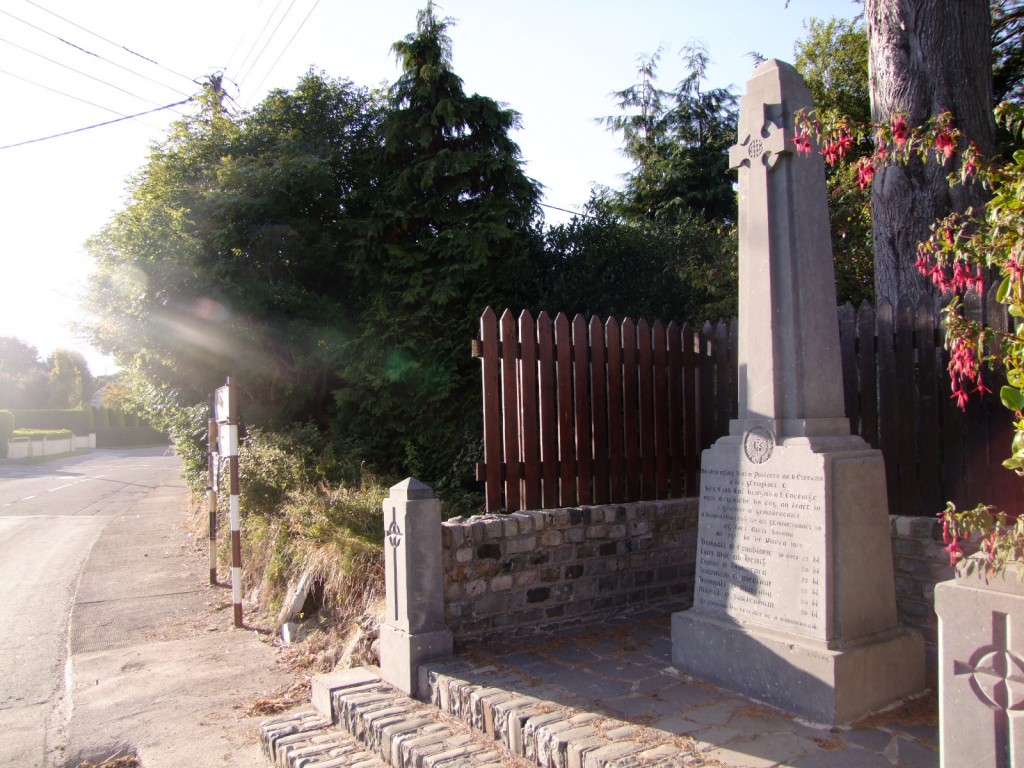
Kieran’s Our City, Our Town Article,
Cork Independent, 2 September 2010
In the Footsteps of St. Finbarre (Part 226)
A Tragedy of Ireland
Leaving Currikippane, the journey along the River Lee valley to Cork City seems to bring one through the history of twentieth century Ireland. Near Currykippane at Kerrypike lies a memorial erected in 1945 to the memory of six young men that were killed near the spot on 23 March 1921.
The event was part of the Irish War of Independence that had been ongoing since January 1919 and which ended in a truce in July 1921. Hence the tragedy at Kerrypike came in the last four months of the guerilla war headed up by Michael Collins against British forces. Much has been written about this era in Ireland’s history. During the final number of months of the war until the Truce of 11 July 1921, there was a spiralling of the death toll in the conflict, with 1,000 people including the RIC police, British military, IRA volunteers and civilians, being killed in the months between January and July 1921 alone.
Entering the newspapers from the perspective of a peaceful 2010 reveals a very unstable county and frightening atmosphere in late March 1921. Ambushes, deaths and the word tragedy appears regularly across its headlines and columns. The official report for the Kerrypike tragedy, as appearing in the Cork Examiner on Thursday 24 March 1921, outlined that six-armed civilians were killed during a hand to hand fight with the Royal Irish Constabulary in the townland of Ballycannon, four miles from Cork. The police, the report stated, were searching for three known “murderers” who were in hiding in the neighbourhood of a farm at Ballycannon, kept by a man called Cornelius O’Keeffe.
The three wanted men, together with three others, were discovered hiding in a shed on the farm, which was surrounded. The occupants became aware of the cordon and opened fire with revolvers and both sides engaged in a shoot-out. The occupants, the report outlined, finding the outhouse untenable, made a dash for the open and ran right into the police cordon. A number of hand-to-hand combats took place and all six men were killed. The report notes that the young men carried no rifles, but were armed with bombs and revolvers, together with supplies of dum-dum ammunition (several types of modified ammunition for firearms), all of which were captured. The six men killed were Jeremiah O’Mullane of 227 Blarney Street (aged 23), Daniel Crowley of 171 Blarney Street (aged 22), William Deasy of Mount Desert, Blarney Road (aged 20 years), Thomas Dennehy of 104 Blarney Street (aged 21 years), Daniel Murphy of Urrey Hill (aged 24 years) and Michael O’Sullivan of 261 Blarney Street (aged 20 years).
Mrs. O’Keeffe, who lived at the farm in a conversation with a Cork Examiner, told of a number of men in police uniform knocking loudly at her door after four o’clock in the morning. As her husband and herself reached their broken in front door they were met by uniformed men, who stated that they were to search the house. They did so “with courtesy”, Mrs. O’Keeffe noted. They then ordered them all, the household, back to bed, and left taking Mr. O’Keeffe with them. A few minutes apsed and the noise of much firing was heard. At this time, there were seven or eight lorries of crown forces in the neighbourhood. They moved off with Mr. O’Keeffe for questioning and the dead bodies towards Cork.
The funeral of the six men took place on Sunday 27 March 1921. Newspaper reports in the Cork Examiner on the following day revealed that the remains of the deceased lay in the mortuary attached to the North Cathedral after being removed from the military barracks. Their remains were visited by “thousands of mourners”. The following notice was served by the military on the Bishop of Cork Dr. Cohalan and on Canon O’Sullivan the local administrator:
“Headquarters 17th Infantry Brigade, 27th March, 1921; Dear Sir – in accordance with instructions issued by the Irish Government concerning the restrictions to be placed on the persons allowed to attend funerals. This Military Government has decided that not than 150 persons will be permitted to take part in the funeral procession of Jeremiah Mullane and others today. These persons will be required to conform to the following regulations: (a) they will not be allowed to march in military formation or allowed to carry out any military exercise, (b) no demonstrations of a kind likely to cause a disturbance will be allowed, (c) no republican flags or I.R.A. badges will be displayed. The republican flag will not be permitted on the coffins. The funeral procession is to proceed via Washington Street and Patrick Street. It is requested that you inform all concerned and do all in your power to see these orders are carried out. A copy of this letter has been sent to the Lord Bishop of Cork – yours truly, B.L. Montgomery, Major, Brigade Major, 17th Infantry Brigade”.
The notification was duly communicated to those in charge but none of the procession conformed to the regulations. It was not until 2 o’clock after the funeral masss that the first of the coffins were borne from the Cathedral mortuary on the shoulders of the deceased’s companions and preceded to St. Finbarr’s Cemetery.
To be continued…
Captions:
555a. Ballycannon Memorial, August 2010 (pictures: Kieran McCarthy)
555b. Descent from Clogheen into Kerry Pike; Boggeragh Mountains in the distance, August 2010
